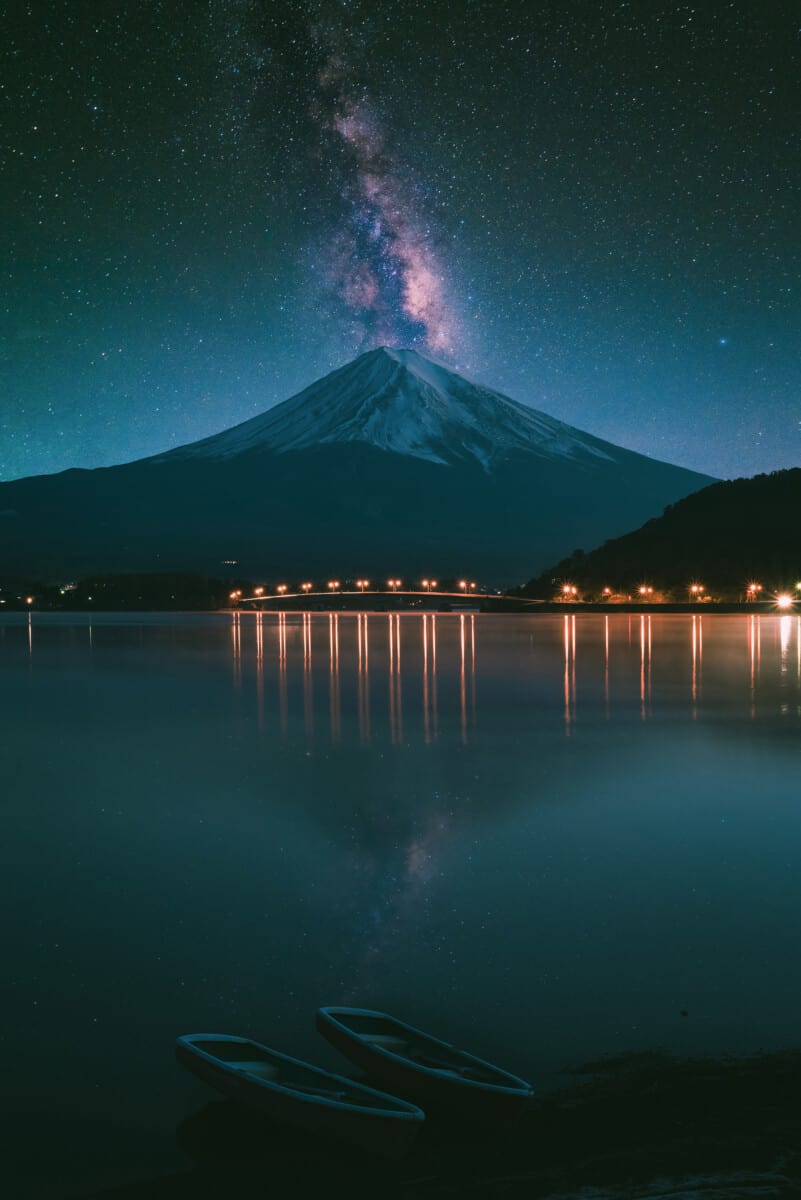Japan is a country with some of the most amazing natural vistas in the world. You just need to have a detailed exploration guide if you want to visit these places. Among these beautiful and dramatic wonders of nature are the national parks of Japan.
There are 34 national parks in Japan, ranging from the northernmost parts of Hokkaido to isolated islands that can be found in the south near Okinawa.
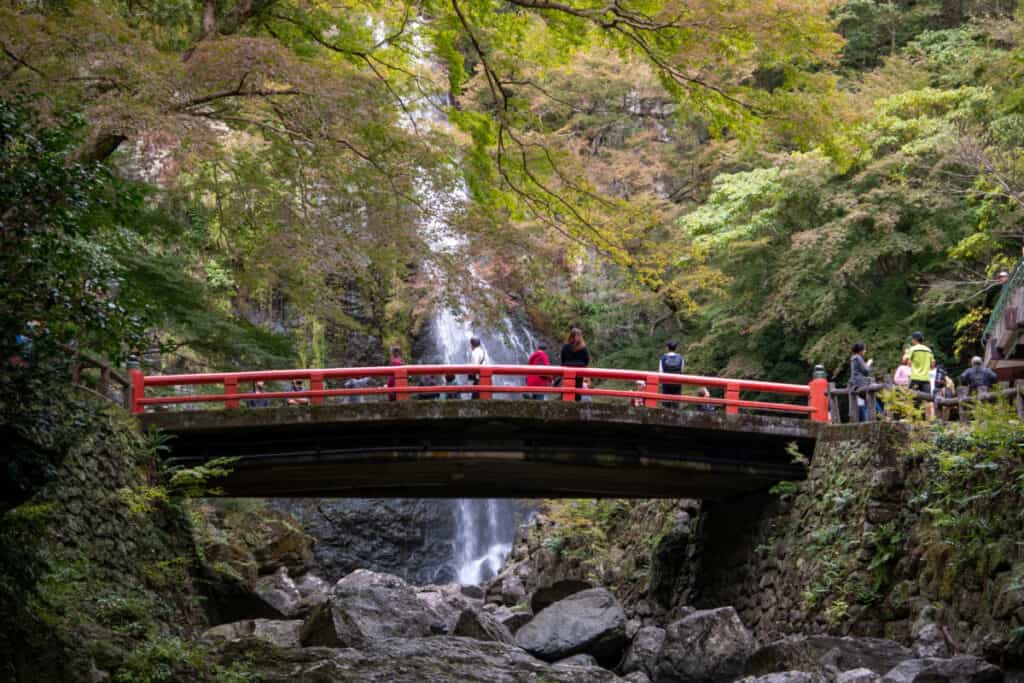
Each National park in Japan has its specific qualities, such as distinctive ecosystems or historic monuments. Many have been classified as UNESCO World Heritage Sites. Visiting Japan’s national parks lets you see some of the country’s most stunning hidden natural areas.
You can get up close and personal with animals as well as visit world-famous shrines and temples.
Visiting the traditional temples of Japan will give you the ultimate experience. It will also let you experience its cultural legacies. This exploration guide will take you thru the 34 national parks in detail, what history there is to those each park, and what makes them so amazingly beautiful.
The 34 National Parks Of Japan
Japan’s first national park was formed in the year 1931 to identify and conserve beautiful natural environs for everyone to enjoy. Environmental areas that contain volcanoes, beaches, forests, and undersea marine ecosystems are all represented in Japan’s national parks.
There are also outdoor activities available for visitors such as hiking, snorkeling, as well as hot springs.
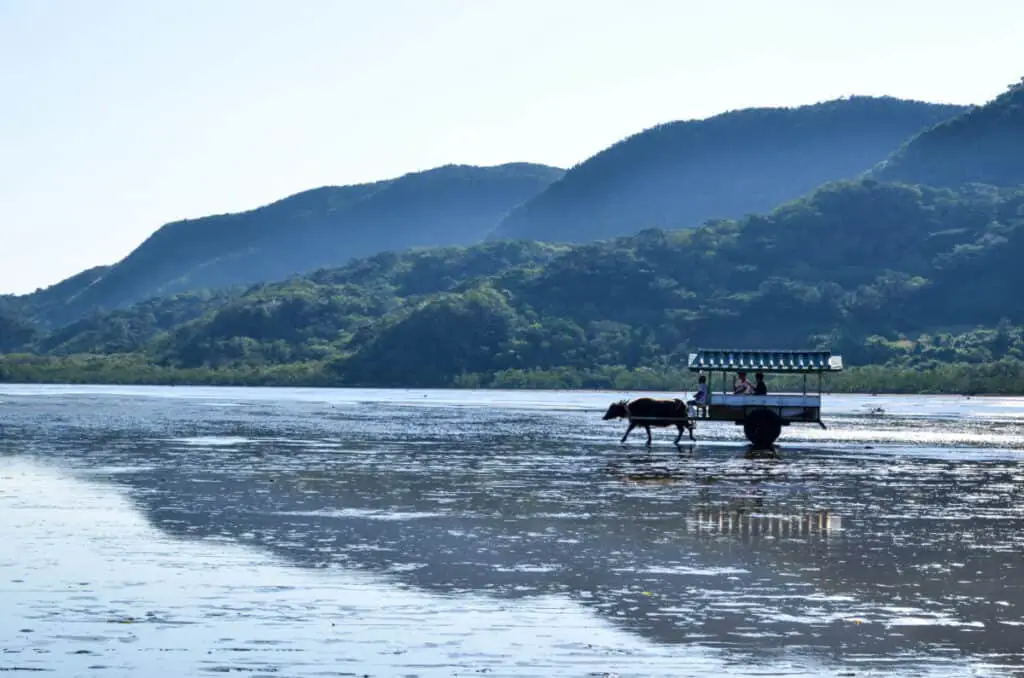
Akan is a renowned national park that has three lakes encircled by volcanoes. It is a popular tourist destination. It is recognized for its natural beauty, including Lake Mashu, which is frequently referred to as Japan’s most exquisite lake.
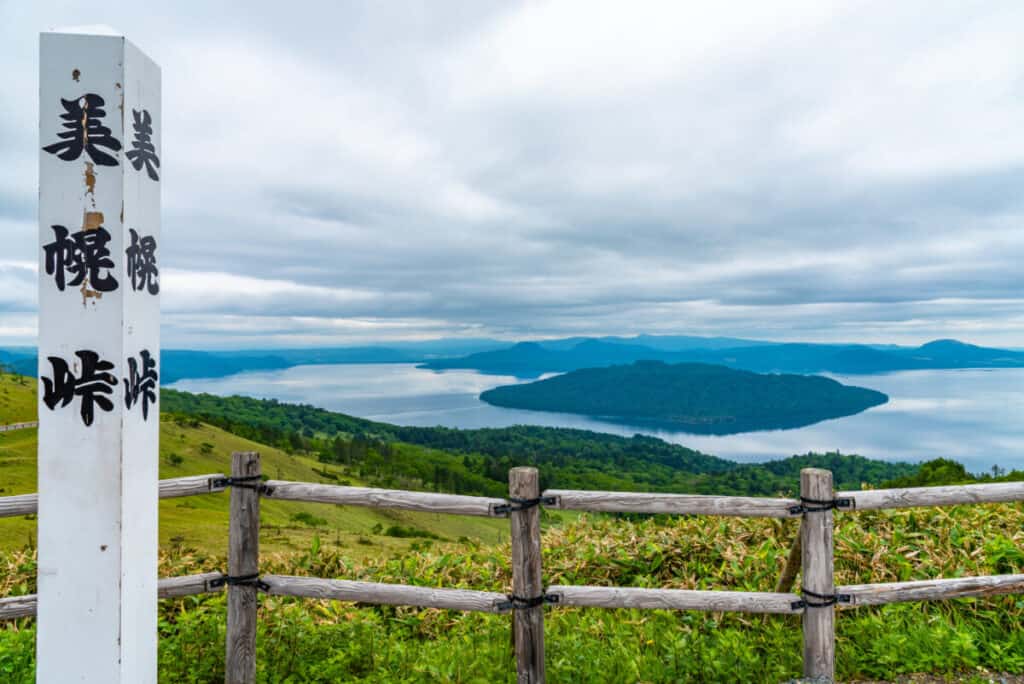
Kaminoko Pond, one of the strangest blue lakes on the planet, is also located here. It is claimed that when the light shines just right on the lake, the water nearly sparkles. Aside from that, the region is a bit of an aqua paradise with three beautiful lakes.
The Minami Alps consists of three mountain ranges; Akashi Mountains, Shirane Mountains, and the Kaikoma and Hoo Mountains. It is also home to Mt. Kitadake which is Japan’s second-highest peak.
The mountainous areas are where the park is receiving a lot of rain in the summer and some snow in the winter. This is because the mountains are at the southernmost tip of the Japanese Alps.
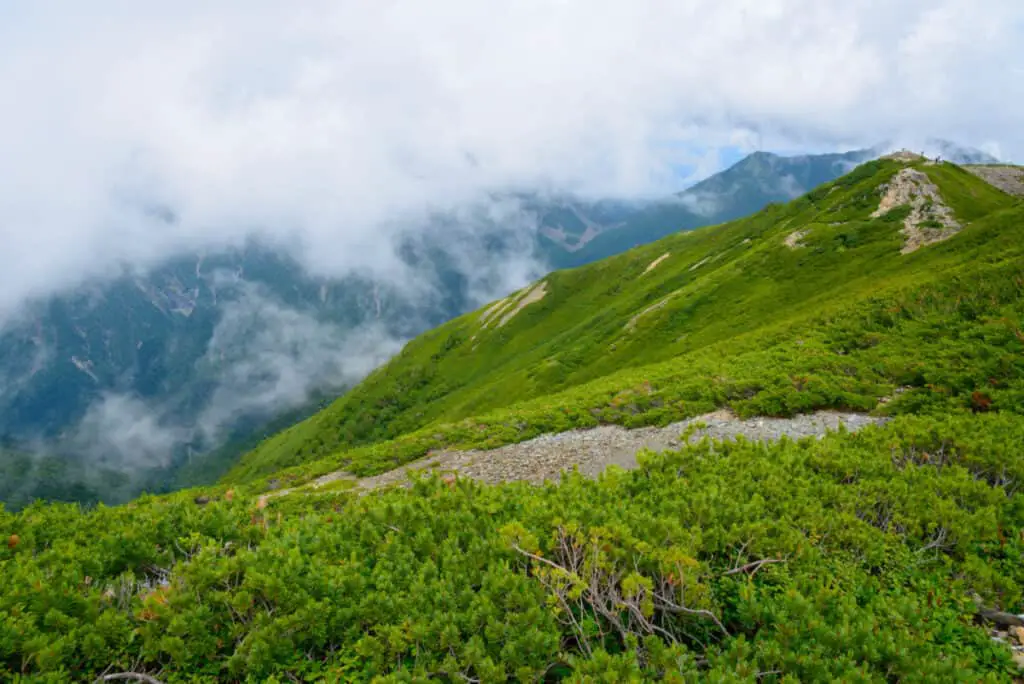
It also has several V-shaped valleys produced due to erosion of the river channel due to copious amounts of rainfall, and the area around the hills is covered with forests thanks to mild snowfall.
Furthermore, from ancient times, the Minami Alps have been revered as a destination of mountain worship. This makes it an important area not just for its natural environment but also for its cultural heritage.
Amami Gunto National Park encompasses Amami Oshima and many neighboring islands. At this national park, you can witness the culture and history of a place where both nature and humans have long coexisted.
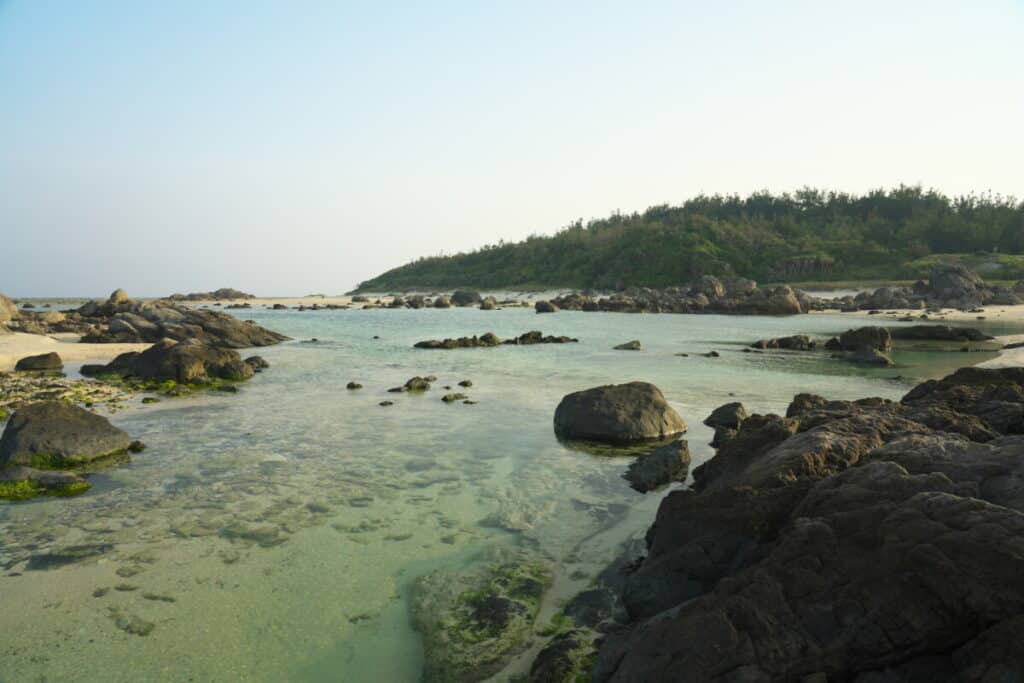
The Amami Islands are home to numerous rare, unique plants and animal species. They are a vibrant ecosystem full of a broad range of natural settings. Furthermore, the islands have a different cultural landscape that evolved from the lengthy interaction between the islanders and the environment and may still be found today.
The Ashizuri-Uwakai National Park is known for its coastal strip in southwest Shikoku, which is studded with islands, and its inland scenery, which includes mountains as tall as 1,000 meters.
The Uwakai region, on the other hand, draws visitors with its numerous and fascinating inlets. These are as a result of a submerged shoreline and island seascapes.
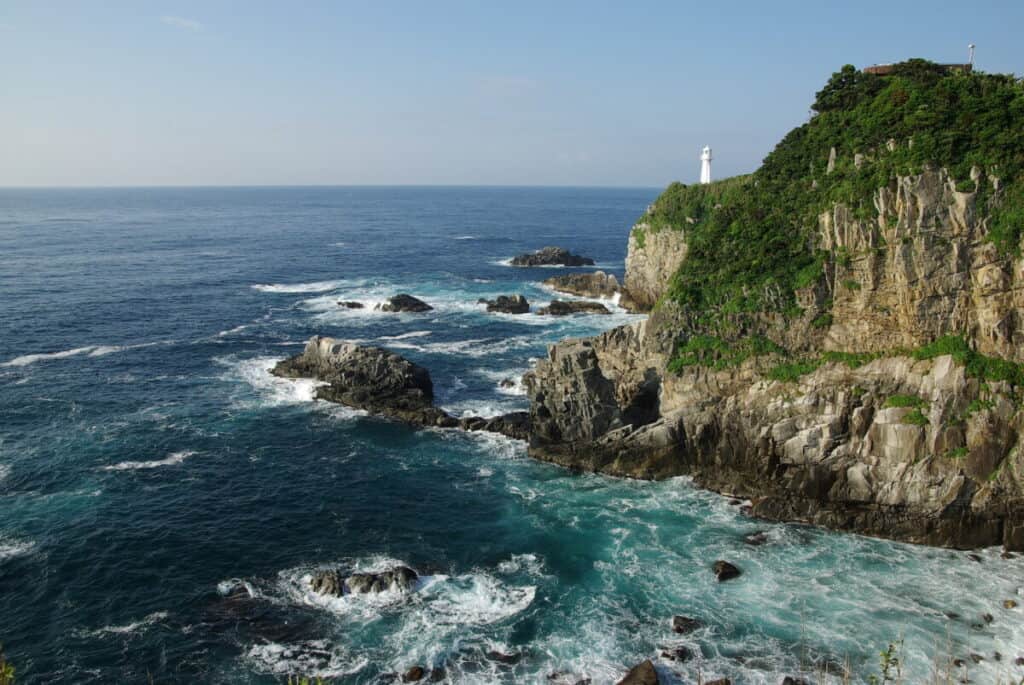
There are also magnificent underwater landscapes made primarily of delicate corals. Visitors may see the vertical distribution of flora spanning to the cold-temperate zone from the warm-temperate zone in the inland area, which is home to a natural forest of enormous trees.
The Aso Kuju National Park in central Kyushu comprises the spectacular scenery around the active volcanoes of the Kuju Mountains and Mount Aso. One of the most striking aspects is the dynamic landscape which is a result of volcanic mountains and calderas. This stunning volcano is a fantastic place for you to explore.
Renting a car is the ideal way to explore this vast national park. This is because you will be more flexible and able to drive to some incredible locations, such as Daikanbo.
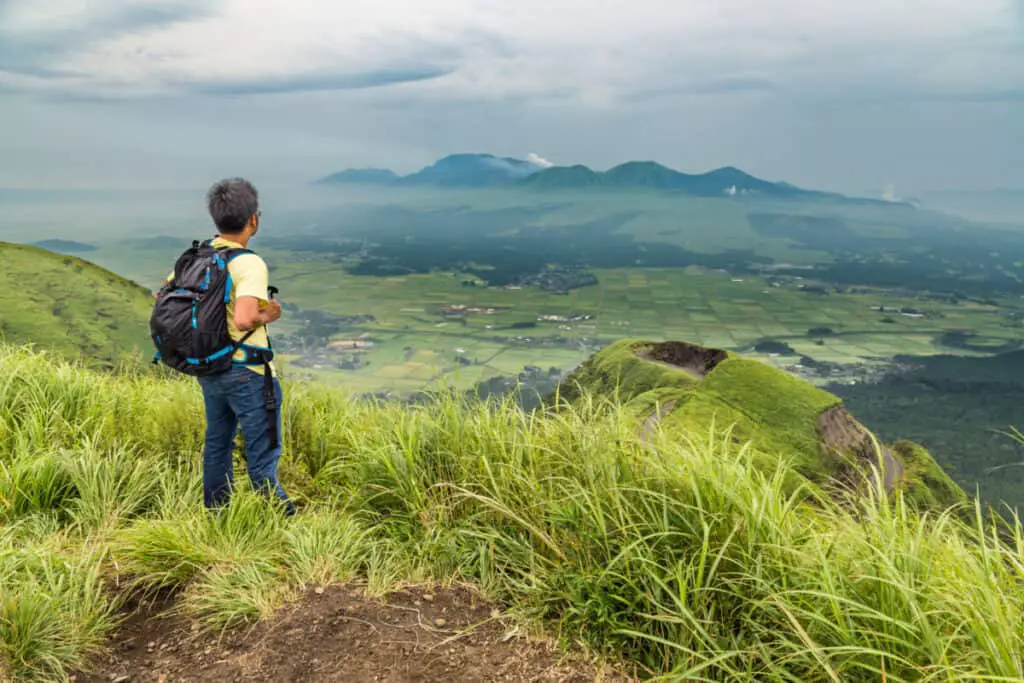
It is an observation site with a spectacular view of Aso’s five gigantic peaks. The beautiful journey through the park is certainly worth the trip.
Mount Bandai and the holy Dewa Sanzan mountains are part of the Bandai Asahi National Park, which spans four volcanic mountain ranges in southern Tohoku.
Hiking and winter sports are among the activities available in the region. Dewasanzan is well-known for its historical significance and as a site of mountain worship.
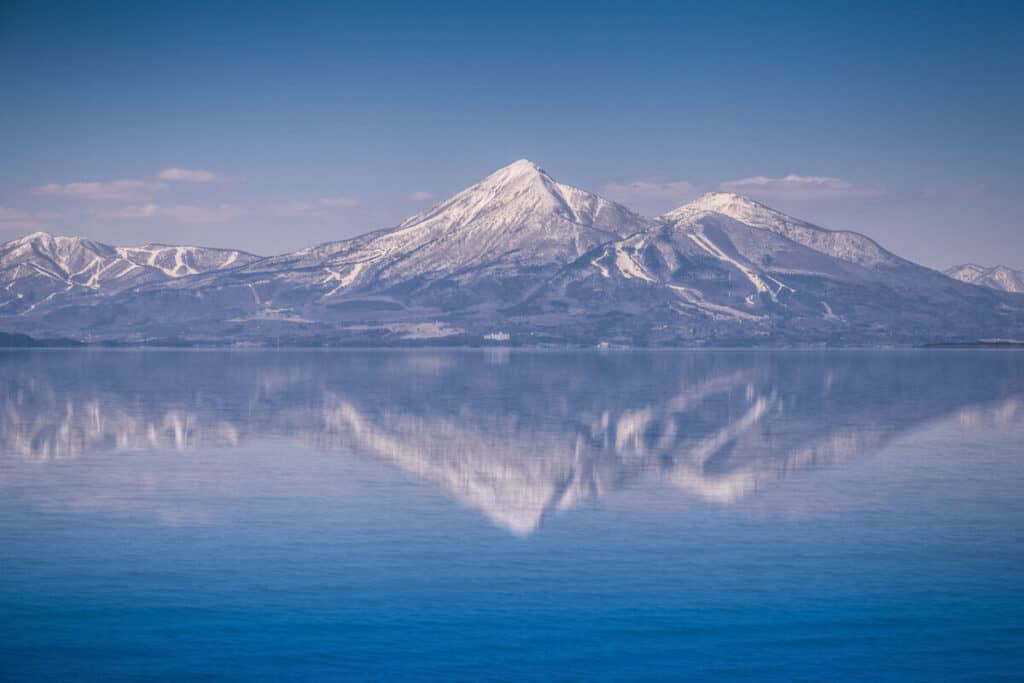
Tourists may enjoy the mountainous sceneries of this park surrounded by towering mountains and the gentle beauty of a flower field after a strenuous, lengthy walk.
The mountains with dense forests, the active volcanic region, the lakes and marshes filled with water, and the mountain worship customs passed down through the centuries are only a few of the attractions of this park.
Chichibu-Tama-Kai National Park is an exclusive park with pristine tributaries and stunning mountains. The creation of V-shaped valleys with a variety of mountain and valley sceneries as a result of the river channel erosion.
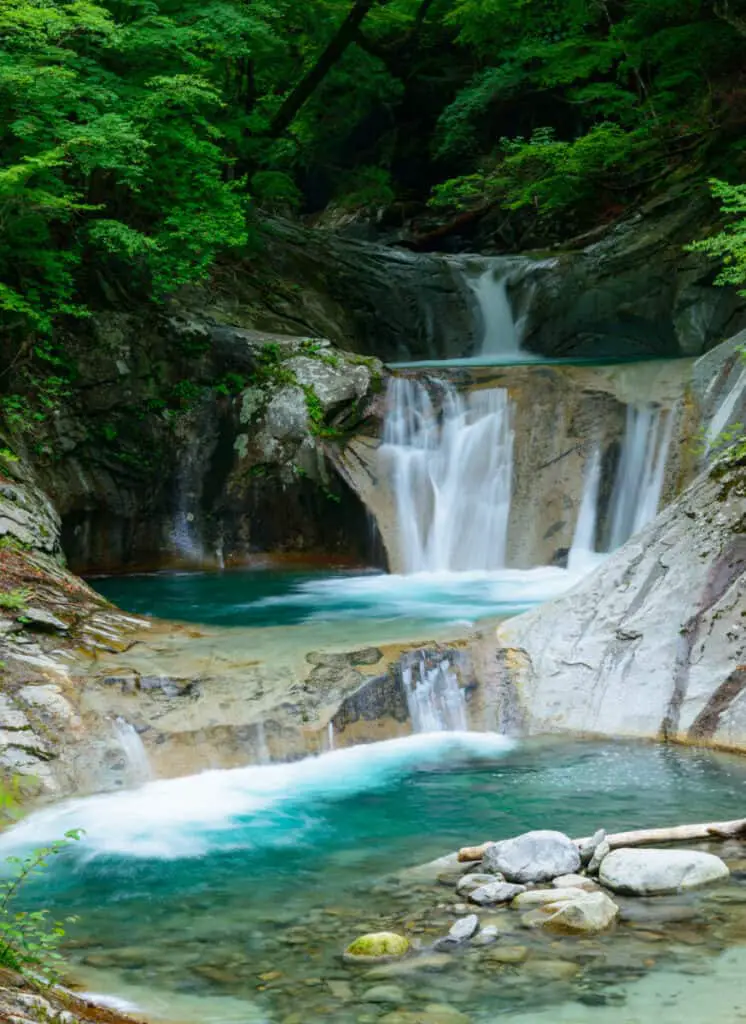
Due to its close proximity to the urban area, this national park has attracted a large number of people who come to enjoy the many opportunities to connect with nature such as river trekking, camping, and hiking.
Chubu Sangaku National Park in Nagano is the ideal place for individuals who enjoy hiking routes and trying out new mountain sports.
It welcomes tourists with breathtaking scenery produced by the northern Japanese Alps, which include 3,000-meter peaks.
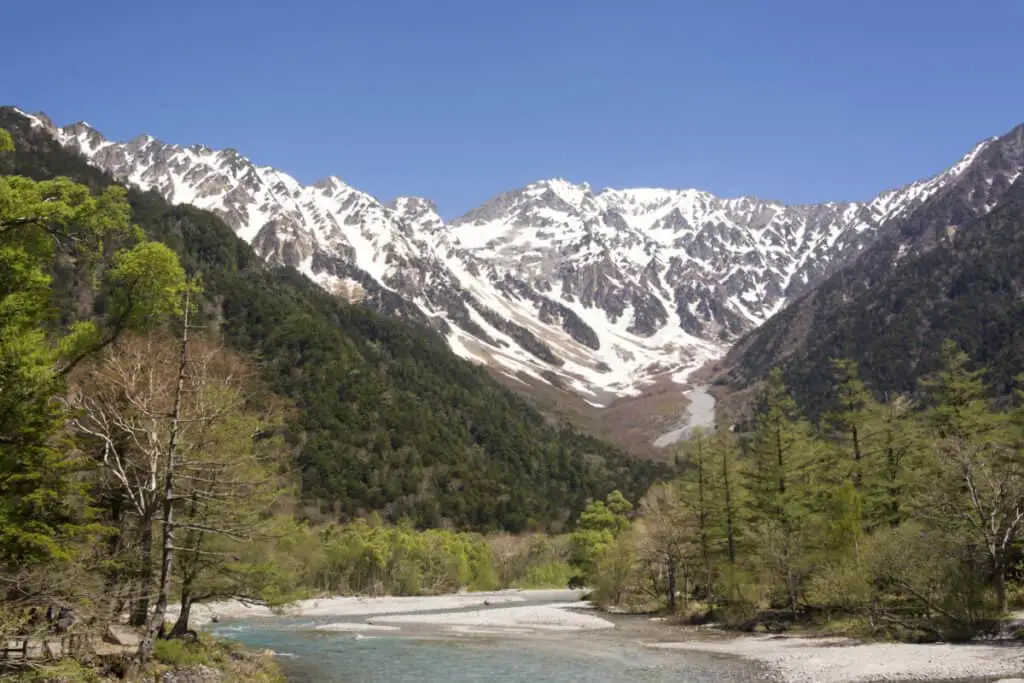
The Tateyama Kurobe Alpine Path, which runs between the Nagano prefectures and Toyama is a beautiful viewing route.
It has several famous tourist attractions, including enormous snow walls in the spring and a pleasant hiking trip in Murodo Plateau around the summer.
The Daisen-Oki National Park surrounds a mountainous area with active volcanic formations, lush forests, and a huge plain that is covered with grass are among the characteristics that make up this area.
Visitors may enjoy views of distinct mountains and various vegetation and wildlife that have acclimated to the environment depending on their location.
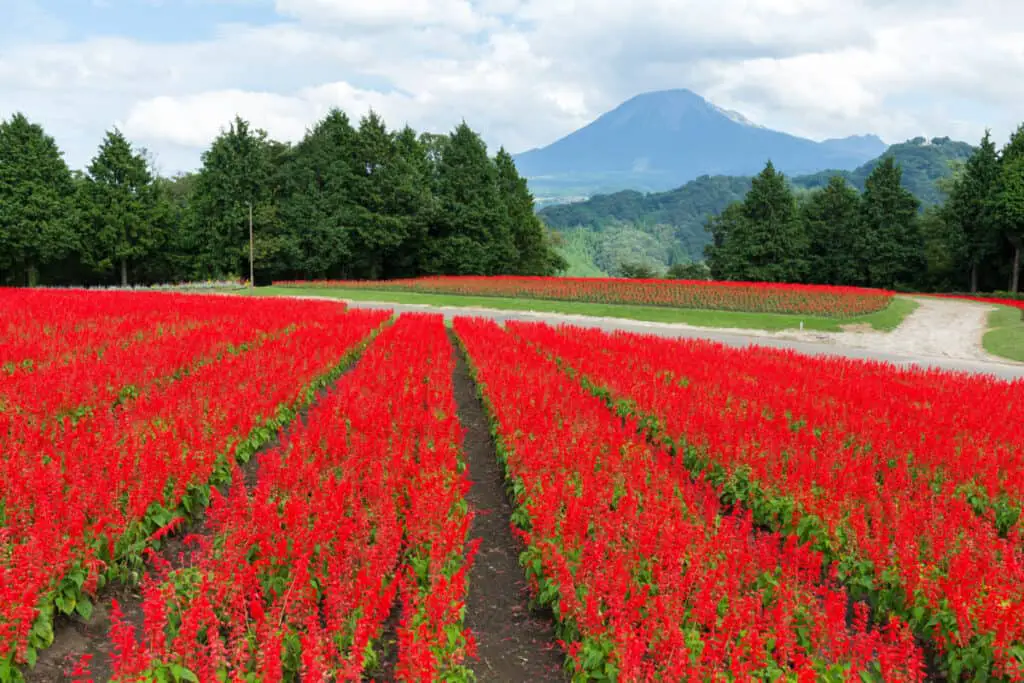
In addition to the biological habitat specific to beaches and islands impacted by ocean currents, the seaside and islands exhibit a variety of shoreline landscapes produced by a complex mix of variables such as climatic changes. The area still maintains the historic interaction between nature and the lifestyle of the residents.
The Daisetsuzan National Park is located in Hokkaido’s center region. The Daisetsuzan volcanic group and other snow-covered peaks such as Ishikari Mountain Range, Mount Tomuraushi, and Tokachi Mountain Range, and also the sources of the Tokachi River and Ishikari River are all included in the area designated as a national park.
The mountainous regions have an average altitude of about 2,000 meters.
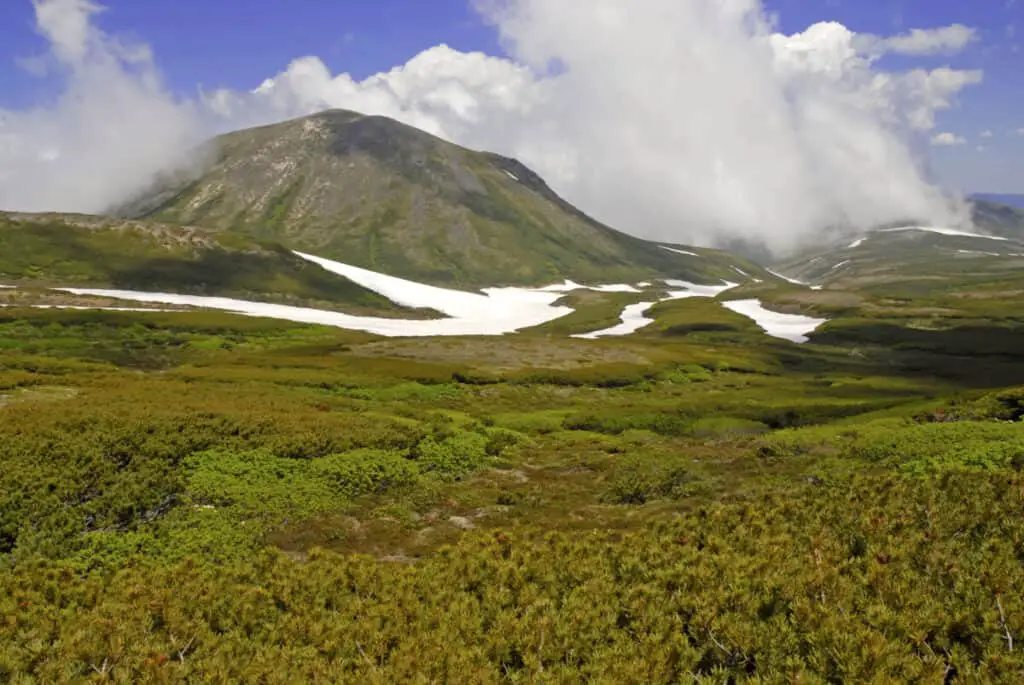
Colorful alpine plants dominate the broad mountain area. The area’s magnificent views are a delight for mountain climbers. Rare animal species such as the Japanese pika which are thought to have survived the ice age are amidst the local treasures.
This beautiful park extends across four prefectures and includes Japan’s tallest mountain, Mount Fuji. An ideal location for a variety of outdoor activities including hiking and camping around the Fuji Five Lakes.
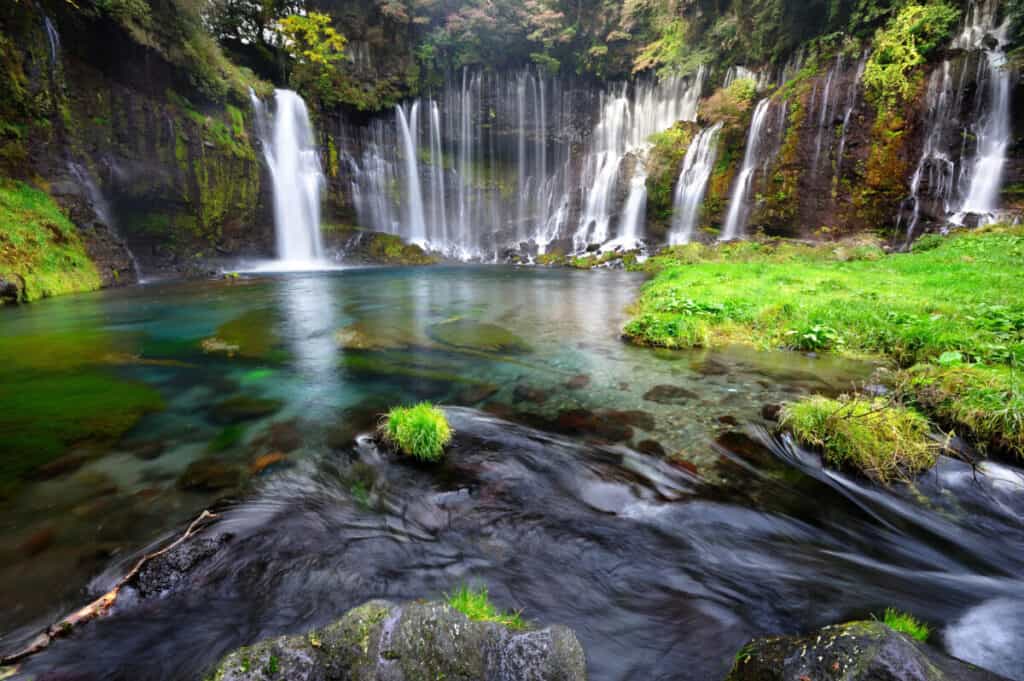
There are also famous tourist sites for you to visit in this park as well as some relaxing hot springs that you can enjoy.
Many nature enthusiasts want to go to the peak of Mount Fuji, which stands at 3,776 meters.
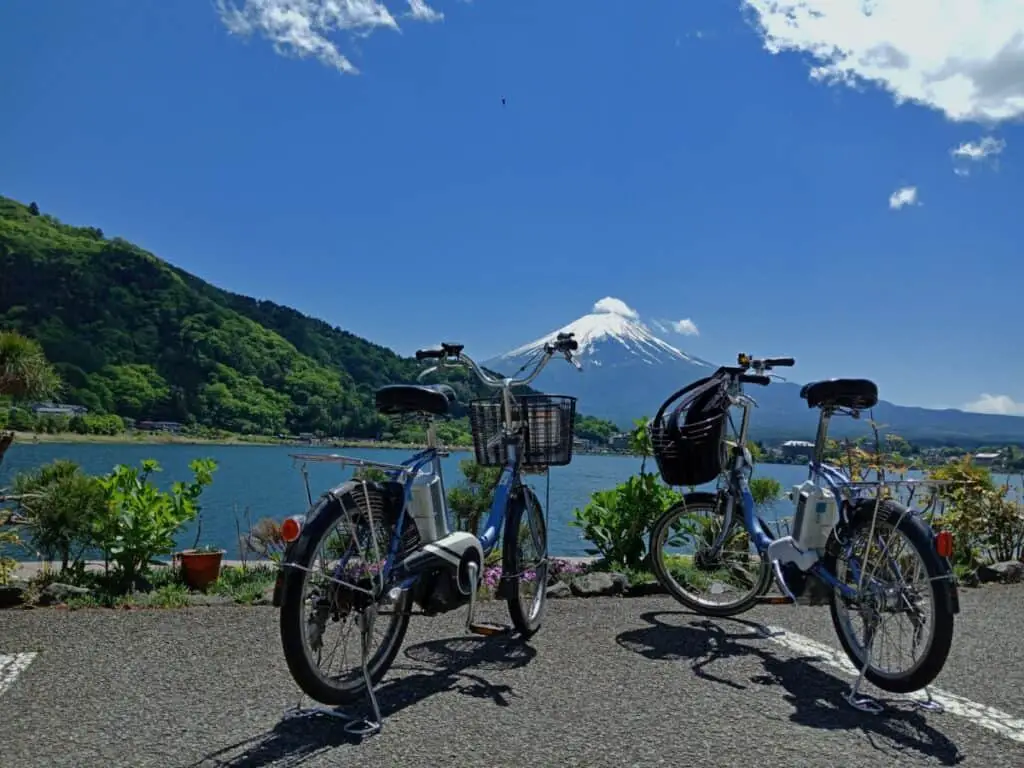
About 300,000 individuals attempt to reach the summit every year. However, the base of Japan’s tallest mountain is equally wonderful to explore all year round for less daring people.
The three summits of Mt. Hakusan, as well as the surrounding mountains, make up Hakusan National Park. You can find extensive natural forests of 1,600 m or less as well as 250 species of alpine flora and chocolate lily in the alpine belts. This means that there still are active conservation efforts of the primitive natural environment of the park.
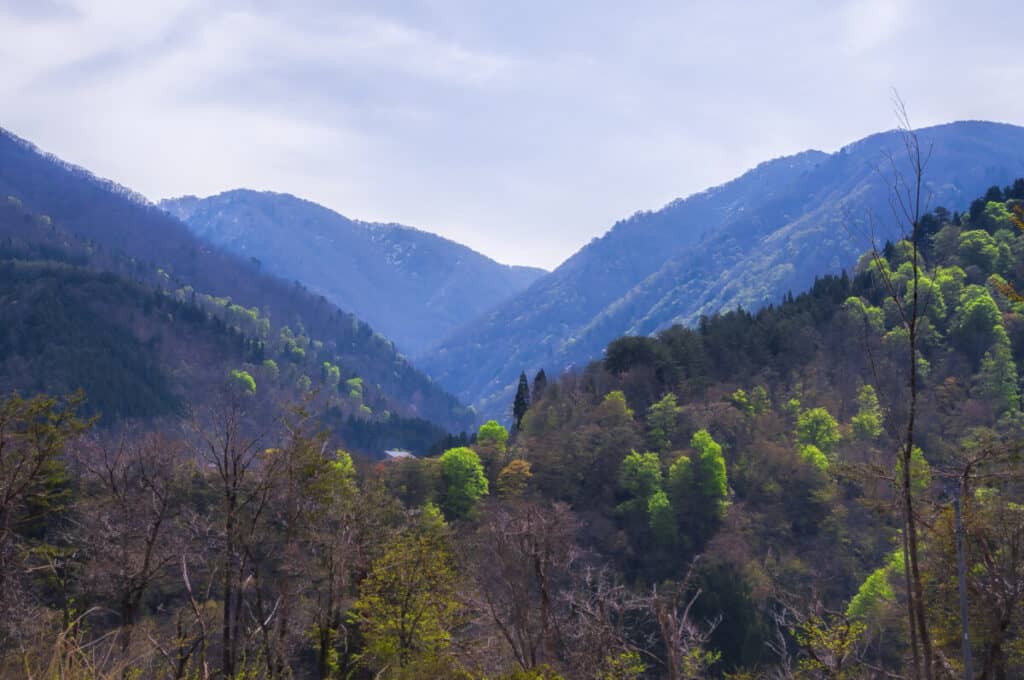
Furthermore, the park is home to many unique creatures such as the Asian black bear, golden eagle, and other wild creatures and birds. It has been recognized as a national park with one of the greatest degrees of nature in Japan. Blankets of heavy snow cover Mt. Hakusan in the winter, blown in by the northeast winds.
Iriomote-Ishigaki National Park is Japan’s furthest southern national park. You can distinguish by its natural scenery, which is part of the subtropical zone and includes a lush evergreen forest, the largest mangrove forest of Japan, and its many coral reefs.
Another distinguishing feature is the abundance of uncommon animal species which you can only find in Yaeyama.
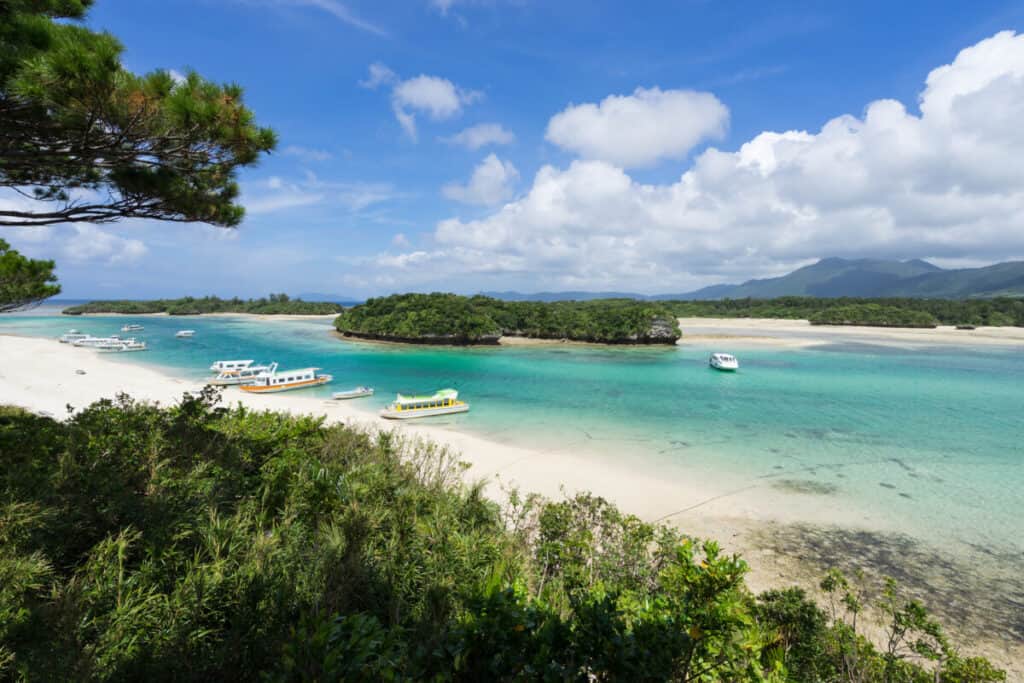
This includes the Iriomote wild cat and Sakishima grass lizard that has periodically been seen on the island. This park offers tourists a range of natural experiences that are of high quality, including snorkeling, mangrove cruises, and scuba diving. There are also land activities available like wildlife viewing which are all set against the scenery of a huge subtropical wilderness.
If you visit the Ise Shima National Park it will allow you to experience both gorgeous ocean beaches and sacred ancient sites in Mie Prefecture’s natural environment. This national park stands on a peninsula with stunning views.
Ise-Shima Skyline is a 16.3-kilometer spectacular route with several pauses in between for you to take in the breathtaking views of Ise Bay.
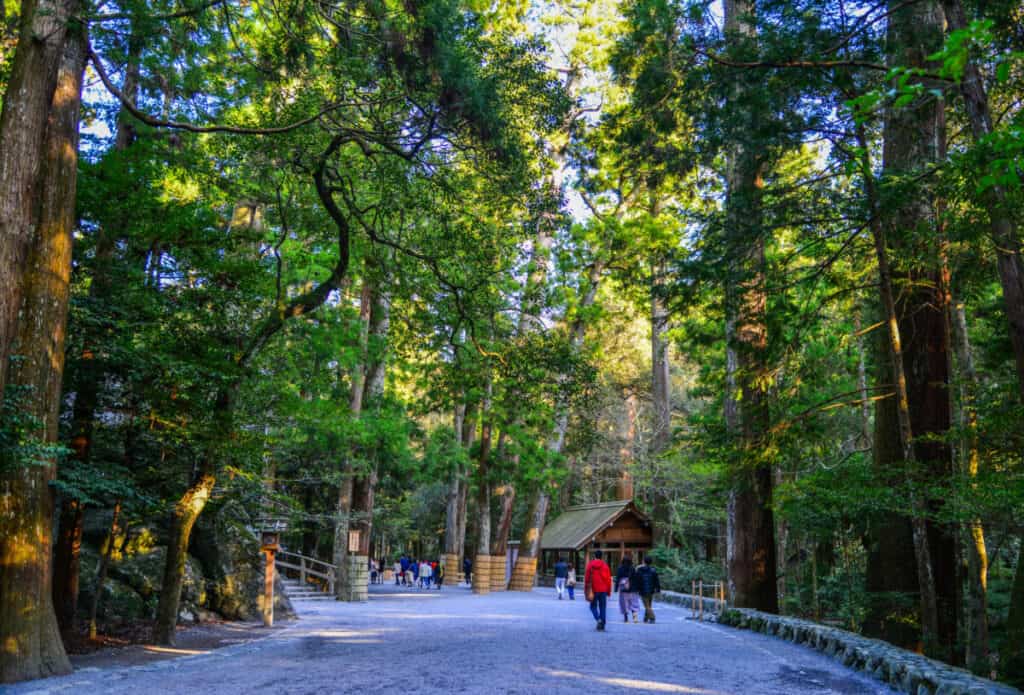
Don’t miss Ise Jingu which is one of Japan’s most renowned Shinto temples devoted to Amaterasu, the goddess of the sun. Exploring the ancient temple complex in the forests will undoubtedly be a once-in-a-lifetime adventure.
Joshin’etsukogen National Park is a giant park containing mountains and highlands such as Mount Azumaya, Mount Naeba, and Mount Asama. All of these mountains have extremely high peaks. The famous peaks of the park as well as the volcanoes provide a widely varied mountain environment for visitors to enjoy.
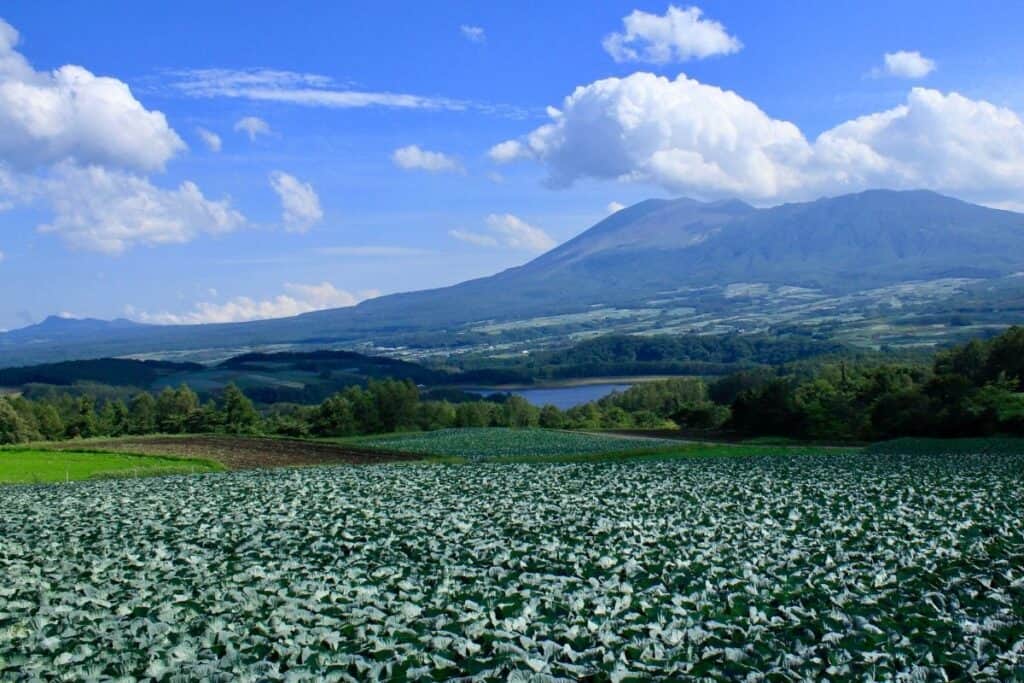
The highlands stretch from the sides to the foot of the mountains, with plentiful marshes and lakes. The park’s numerous hot springs, which are formed due to volcanic activity, are another major draw to the area.
The Kerama Islands are a group of about 30 islands and rock reefs. Seascapes of exceptionally clear waters where there is the breeding of humpback whales, the mass population of the reefs by many different species of corals, sea cliffs, sandy beaches, vegetation that are distinct to the windy regions, and the archipelago itself are among the landscapes available on the Kerama Islands, which stretch from land to sea.
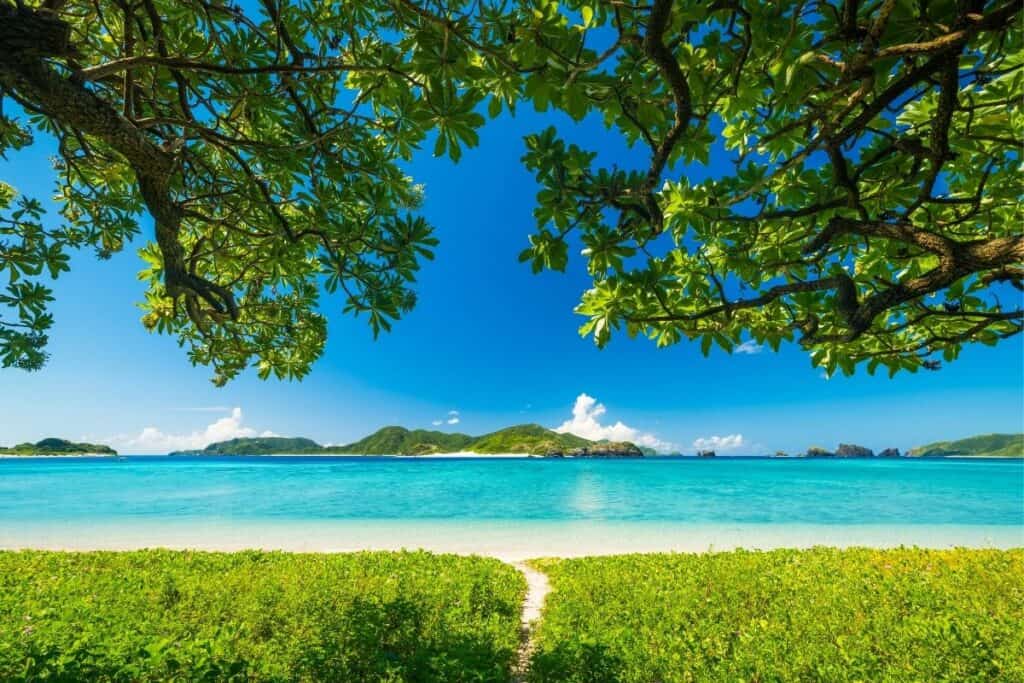
The ocean accounts for the vast bulk of the park’s surface area. Visitors may enjoy fun activities such as snorkeling and scuba diving in a magnificent ocean area known as the Kerama Blue, as well as whale watching in the winter.
Kirishima-Kinkowan National Park was one of the first national parks of Japan. The park is in two sections, one in the north and one in the south, each having its own distinct landscape, popular as the Kinkowan Bay area or the Kirishima region.
In addition to a great quantity of natural flora, the Kirishima area in the northern section of the park contains a succession of more than 20 volcanoes.
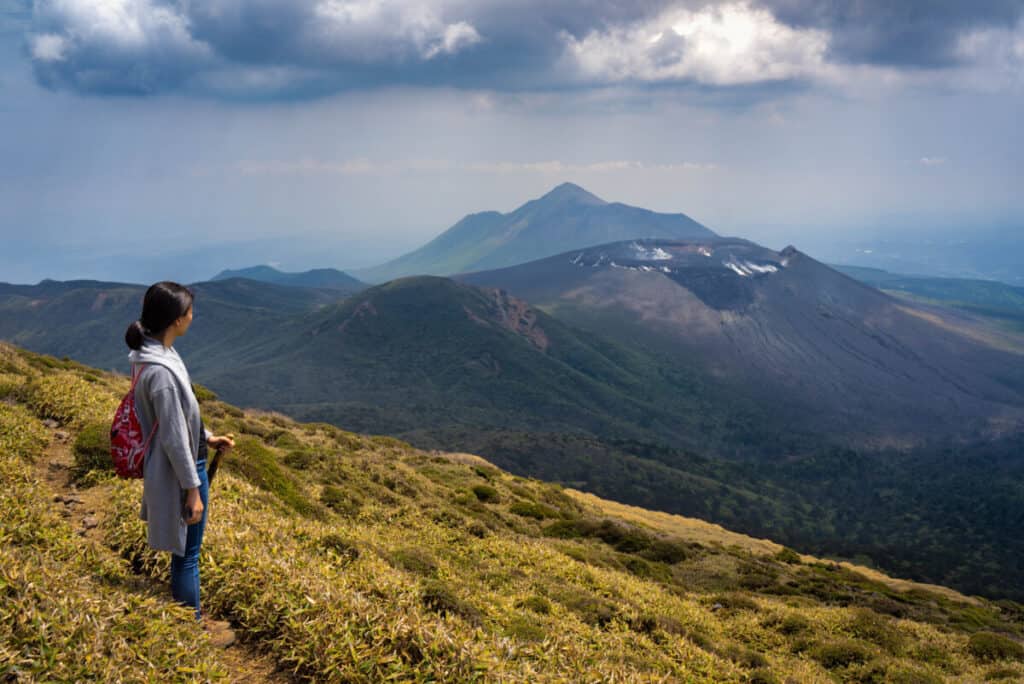
Those are of all sizes and you can also find hot springs, crater lakes, and plateaus all formed by volcanic activity. You can find unique scenery containing mountains and lakes as well as the sea area within the bay. There is also a volcano, Mount Sakurajima, that is still active which is the main symbol of the area.
Kushiro Shitsugen National Park is another must-see national park in Hokkaido. Visitors may explore the beautiful park while experiencing spectacular scenery and a variety of fauna through 5 observation sites.
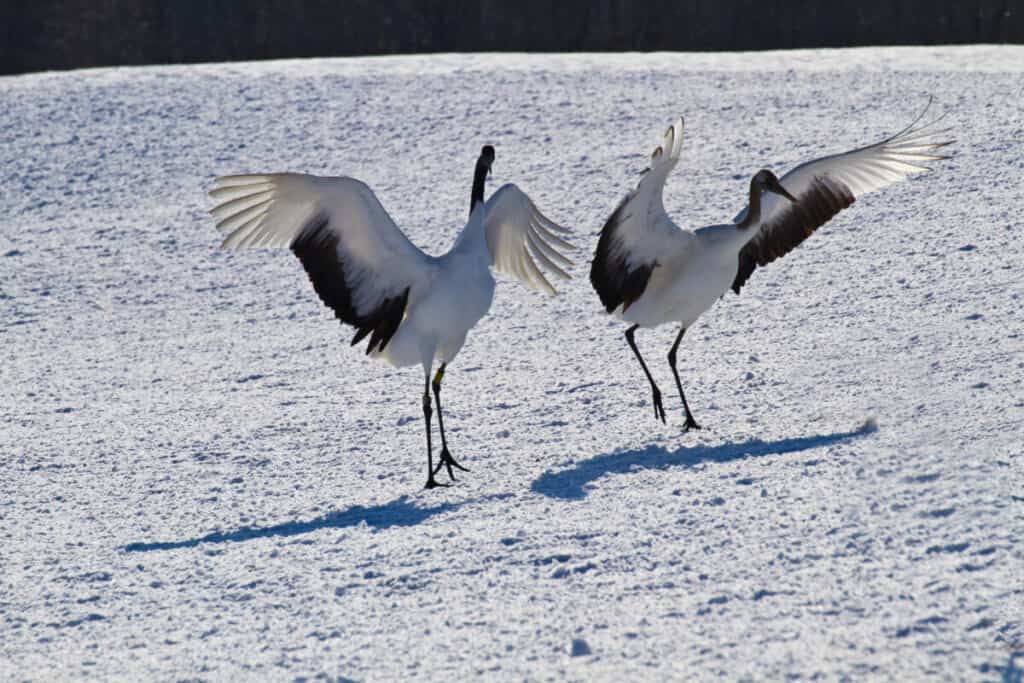
Deer, eagles, as well as the symbolic bird of Japan, the endangered red-crowned crane, may also be seen, making it a popular bird-watching destination.
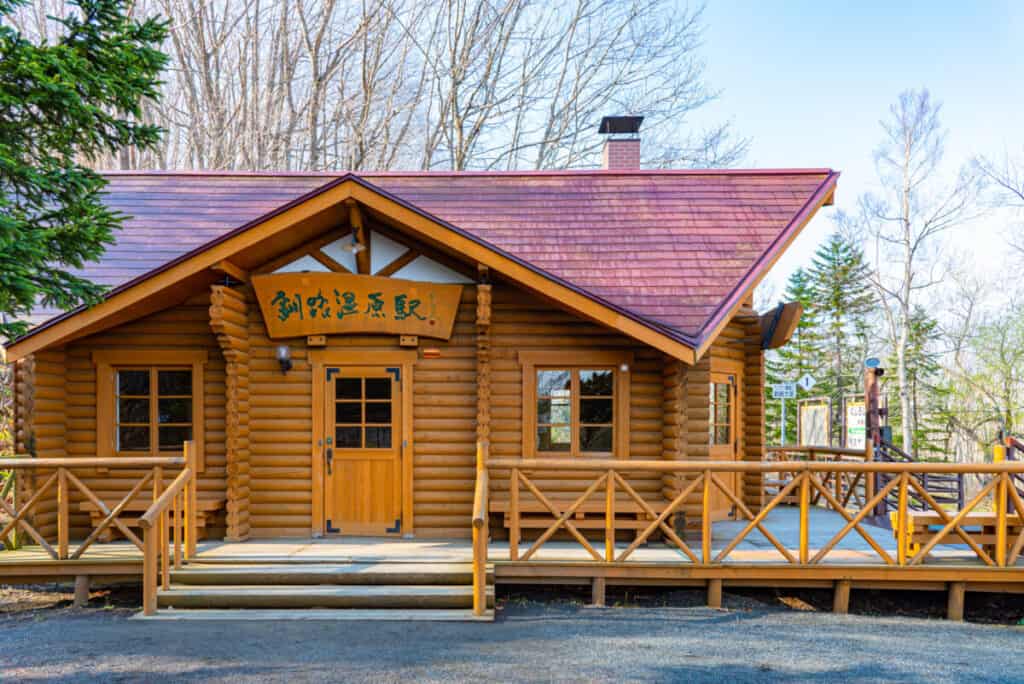
Because it is a national park, there are no street lights, which means there is less light pollution, making it ideal for watching another natural event, the fireflies. The ideal time to see the mass of the fireflys beauty here is in the early summer.
The Myoko-Togakushi Renzan National Park is located on the boundary of Niigata and Nagano Prefectures. Despite its modest size, the park is tightly congested with mountains, with a unique look defined by a panorama of highlands spread over the base of reservoirs, mountains, and lakes, such as Lake Nojiri.
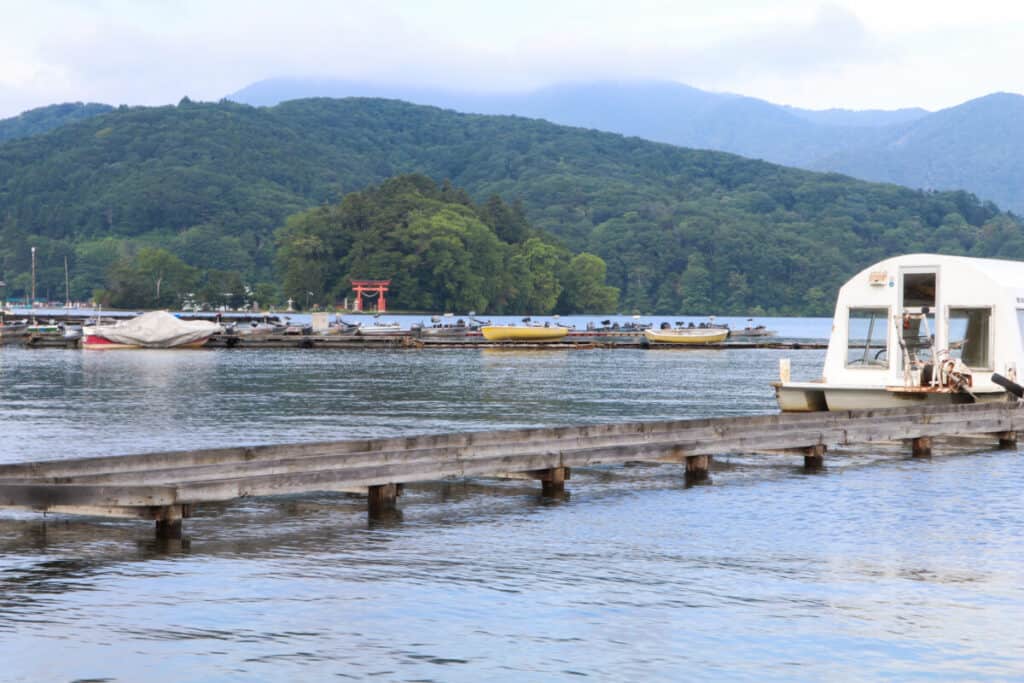
There are also the famous mountains which contribute to the area’s high popularity. In addition, the highlands at the foot of the mountains draws a wide range of people who come to enjoy the outdoors in the summer.
The unforgiving yet majestic workings of nature, along with the distinctive culture and mountain worship that received the gift of nature, produce a unique panorama only found in this part of the globe in this park region.
Nikko is a tranquil mountainous location popular with visitors as a weekend retreat into nature. It is particularly popular in the fall when the changing leaves offer a magnificent panorama. This national park encompasses several of Tokyo’s most renowned tourist sites.
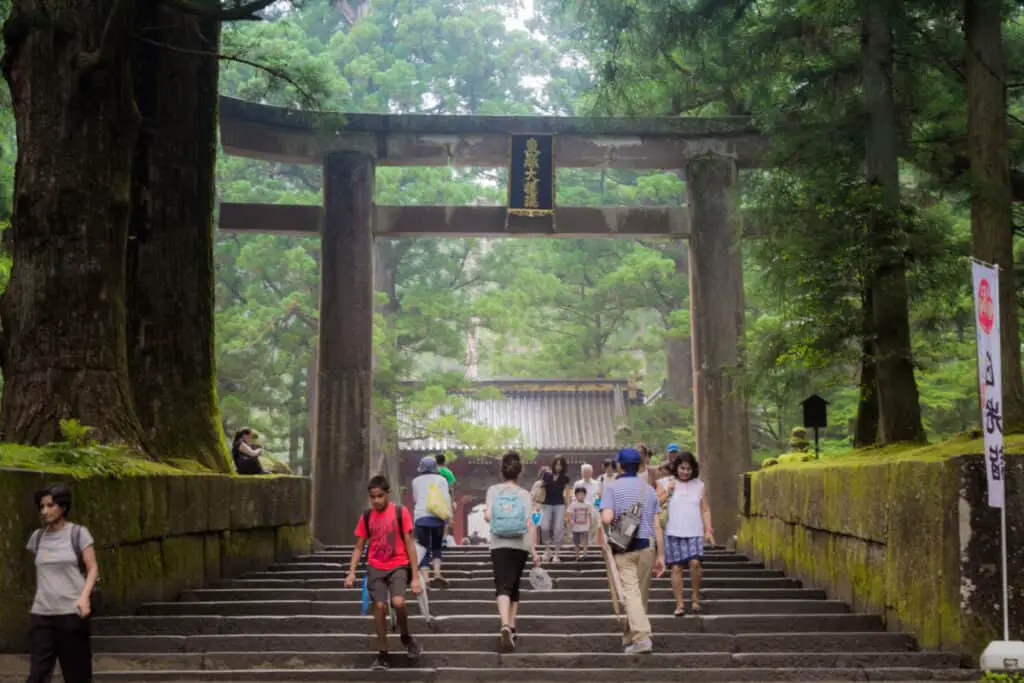
Nikko Toshogu Shrine is a holy Shinto shrine that is one of the 23 UNESCO World Heritage Sites of Japan. The breathtaking landscape provided by the majestic waterfall, as well as the neighboring nature, which has lush vegetation in the summer and autumn hues in the fall, draws people all year.
Ogasawara National Park is a collection of islands belonging to the Tokyo Islands located about 1,000 kilometers south of Japan’s mainland. The park is home to a unique ecology due to its extremely remote location. The group of subtropical islands provides an excellent habitat for animals and plants to thrive without outside interference.
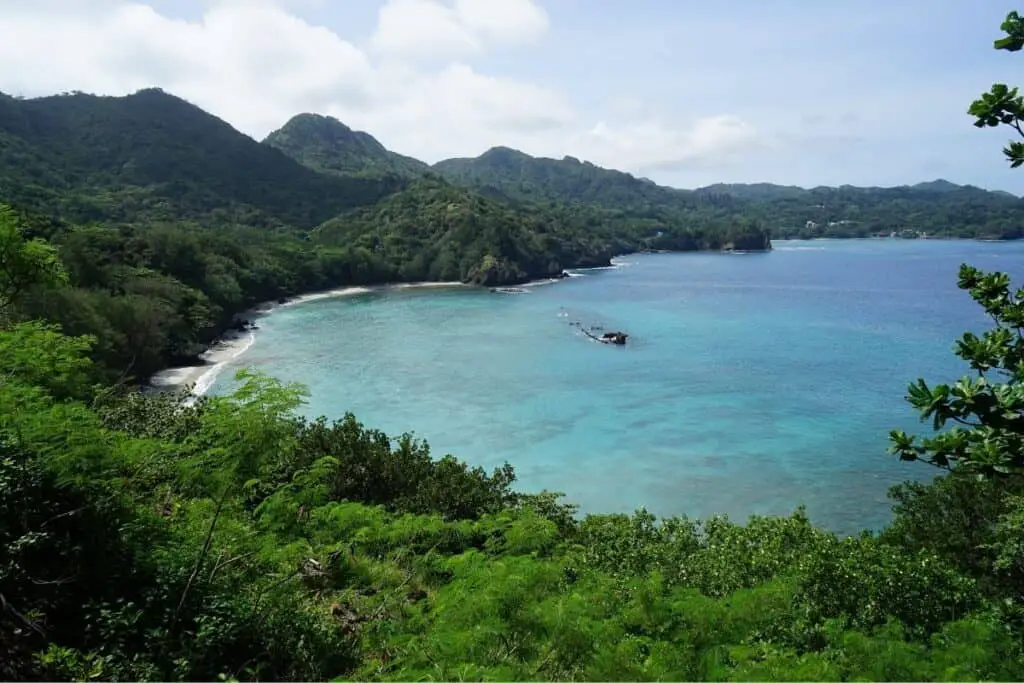
These parks all provide magnificent landscapes, and historic sites maintained for generations, whether you’re searching for wildlife viewing, or simply striking nature. These parks can be ideal destinations for families with children, as they will foster their natural curiosity and interest.
Oze National Park has a long and illustrious history. It was first declared as part of Nikko National Park and was removed again. The region is familiar for its appealing scenery, which includes the Lake Ozenuma and Ozegahara Plateau which was a result of volcanic eruptions damming the Tadami River’s headwaters, as well as the surrounding mountains.
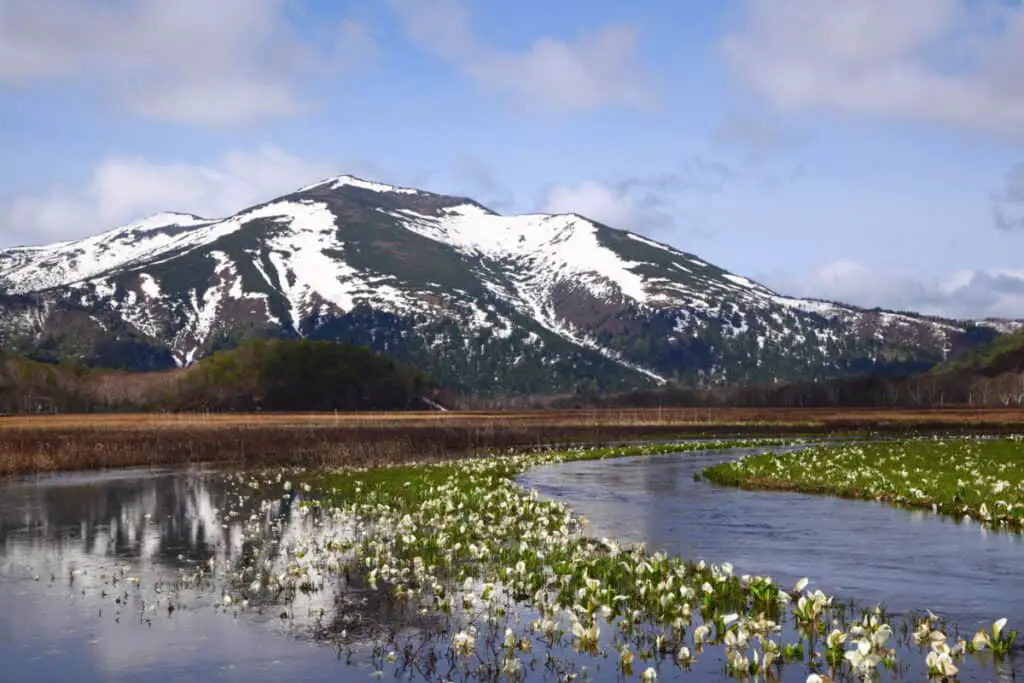
Even though Oze has been threatened by development on several occasions, its valuable natural resources are in protection thanks to the efforts of many individuals.
Rishiri-Rebun-Sarobetsu National Park is Japan’s most northern national park, offering a diverse environment of flower meadows, coastal sand dunes, mountains, and sea cliffs. Mount Rishiri is a magnificent peak that is in the shape of a cone and serves as a symbol for the park.
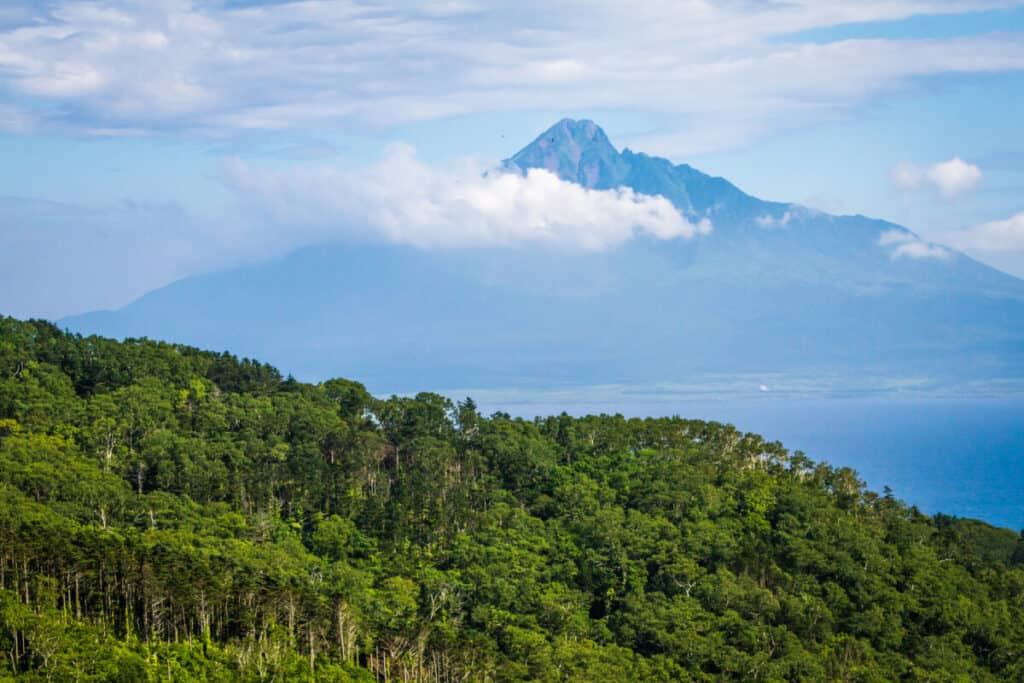
The Wakasakanai and Bakkai Shores have distinctive landscapes consisting of rows of sand dunes that are belt-like and are punctuated by lakes. The Sarobetsu Plain is one of Japan’s greatest high moors over peat soils, making it a vital halting point for wild birds like ducks on their journey.
Saikai National Park is known for its stunning archipelago seascapes. The park is also famous for the diverse vistas found across the micro islands and steep sea cliffs with columnar joints that are well-developed. From the park, visitors may see a variety of volcanic landscapes.
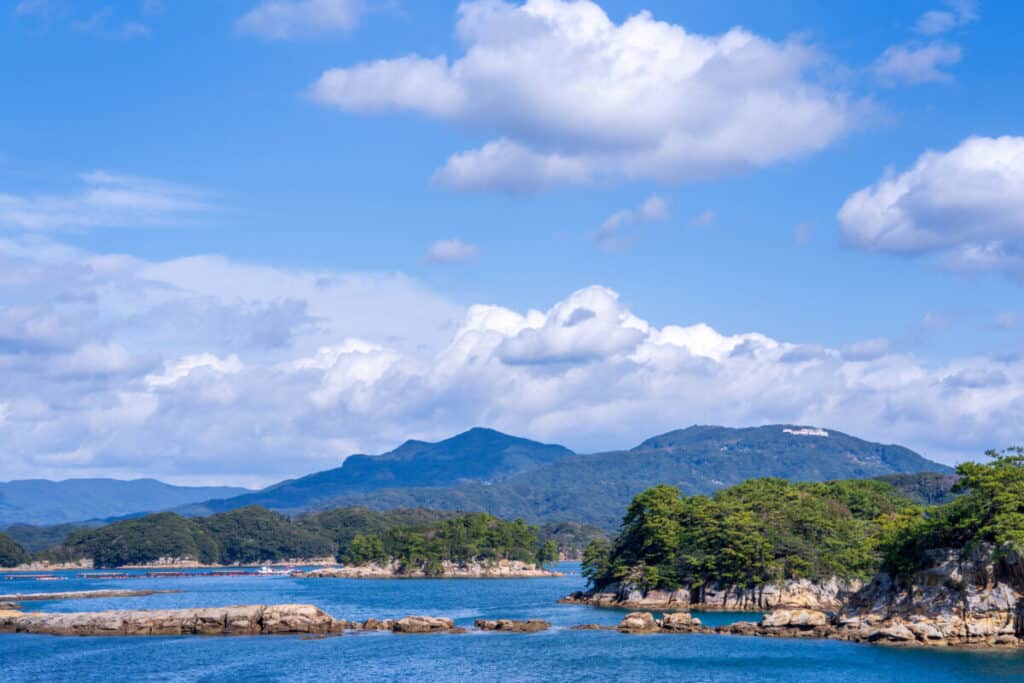
The park has incredible biodiversity as a result of these complicated geological characteristics. The terrain is lush and there is a varied flora ranging from continental components to those of Southeast Asia and unique species due to the isolated region.
The San’inkaigan National Park has a coastline that is a submerged coast where the mountains meet the ocean. It is familiar with its diverse coastal scenery, which includes features like sea caves and cliffs. There are also reefs that have grown substantially and merged with the water.
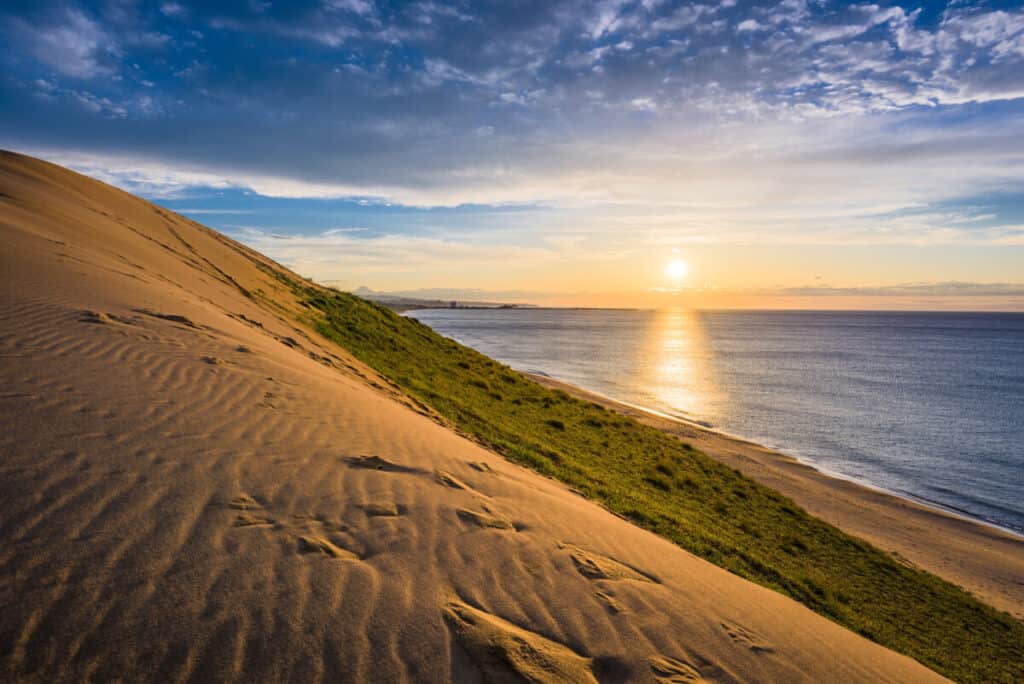
Another feature is the enormous sand dune environment, which was a result of wave erosion and transportation of sand from the mouths of the river. You can observe unique landforms throughout the national park due to this.
The Sanriku area was devastated by the Great East Japan Earthquake due to which this national park was established to help in the reconstruction of this region. The northern section of this park is popular as the “Alps of the Ocean” due to its dramatic cliffs. In the south, you can observe a magnificent shoreline with its varied topography.
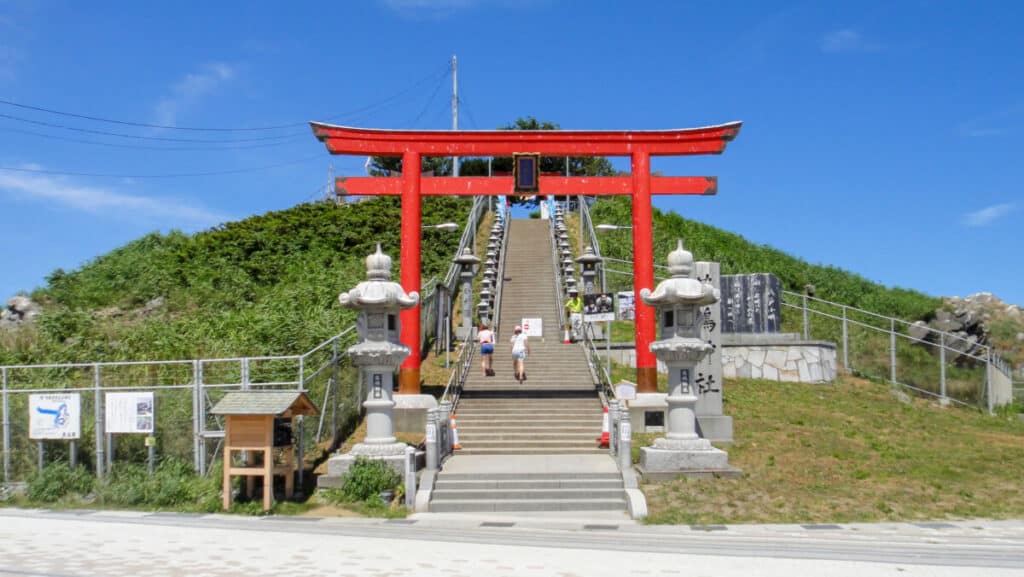
In addition, the coastlines are home to a varied array of maritime flora that has evolved to thrive in the specific coastal climate, and tourists can view wildlife up close. This national park is different from any other park in Japan since it was built to help people rebuild after a disaster. Visitors come from all across the country to learn about disaster avoidance.
Setonaikai National Park was designated as one of Japan’s first national parks. It has a variety of well-known tourist attractions and natural sites. Beautiful coastline beauty, scenic sights of the Seto Inland Sea with over 1,000 islands. There are also historic sites, a popular cycling path, and much more that you can find here.
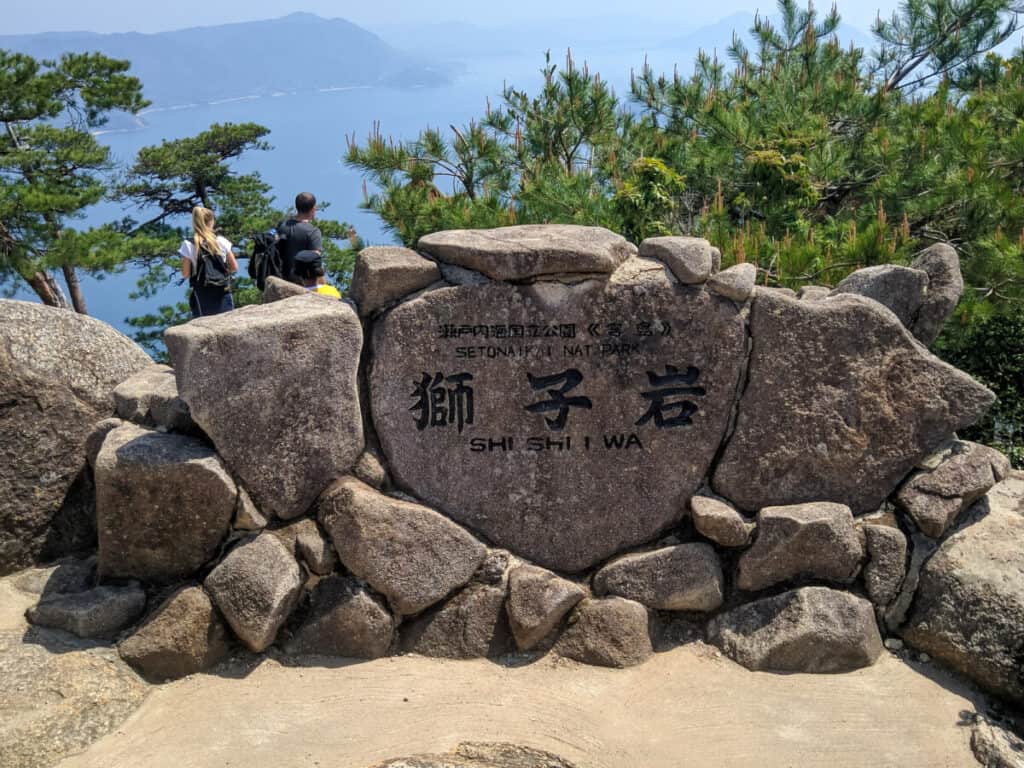
Visit Miyajima’s Itsukushima shrine to have a surreal experience of watching the famous floating torii gate and Mt. Washuzan for a spectacular view of the Seto Ohashi Bridge and the Seto Inland Sea islands.
Shikotsu-Toya National Park is a park where tourists may observe not only two enormous caldera lakes but also differently formed volcanoes. You can also find significant volcanic activity in this park. The beautiful panorama of intertwining lakes, forests, and volcanoes can soothe people’s emotions and minds.
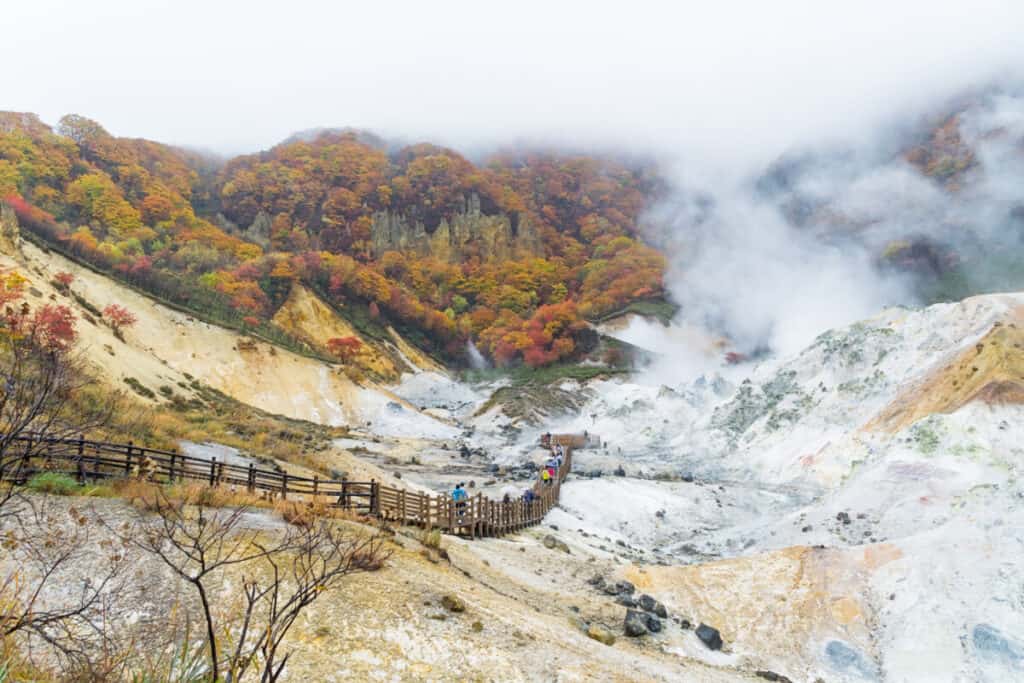
Lake Shikotsu has a unique deep blue water surface that is very attractive to park visitors. People come to the park to hike on mountains and view alpine vegetation, as well as to witness volcanic occurrences and commune with nature.
Shiretoko National Park is one of Hokkaido’s numerous national parks. The park is home to a wide range of rare animals as well as unspoiled natural areas. It captivates tourists with a breathtaking environment produced by magnificent volcanic mountains and picturesque coastlines.
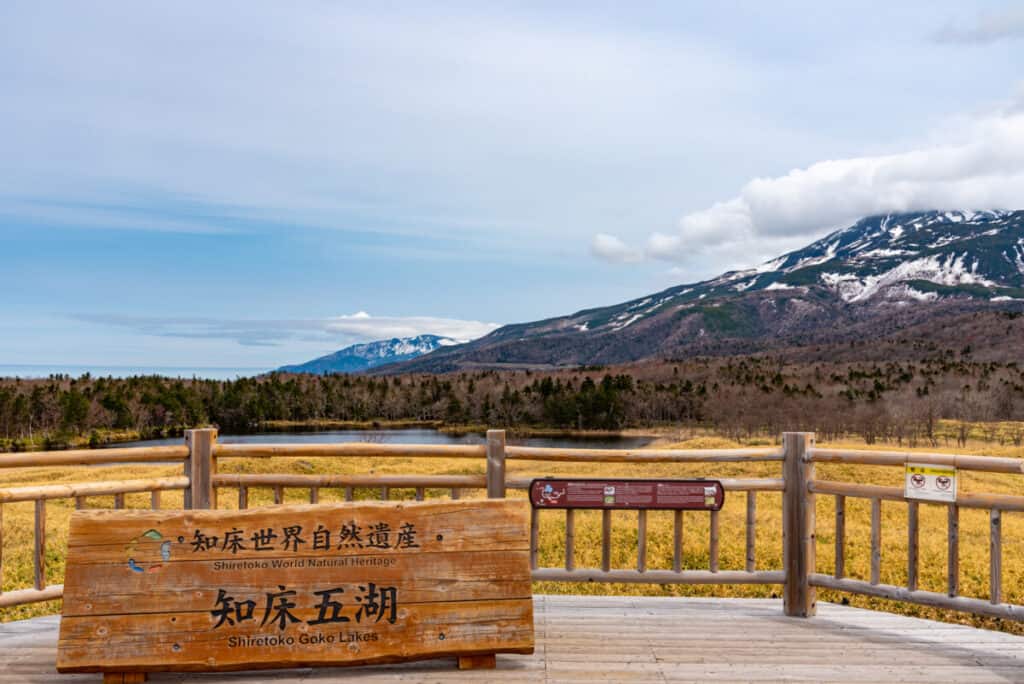
Brown bears have the greatest population density in the world in Shiretoko, so be ready to see one, especially in the summer. In the winter, the suburban conditions allow for some incredible sports such as winter rafting.
The Towada-Hachimantai National Park is a park of mountains and lakes. The enigmatic beauty of Lake Towada and the various flora and fauna nourishing in the rich natural environment are just a few of the sights to see in this region.
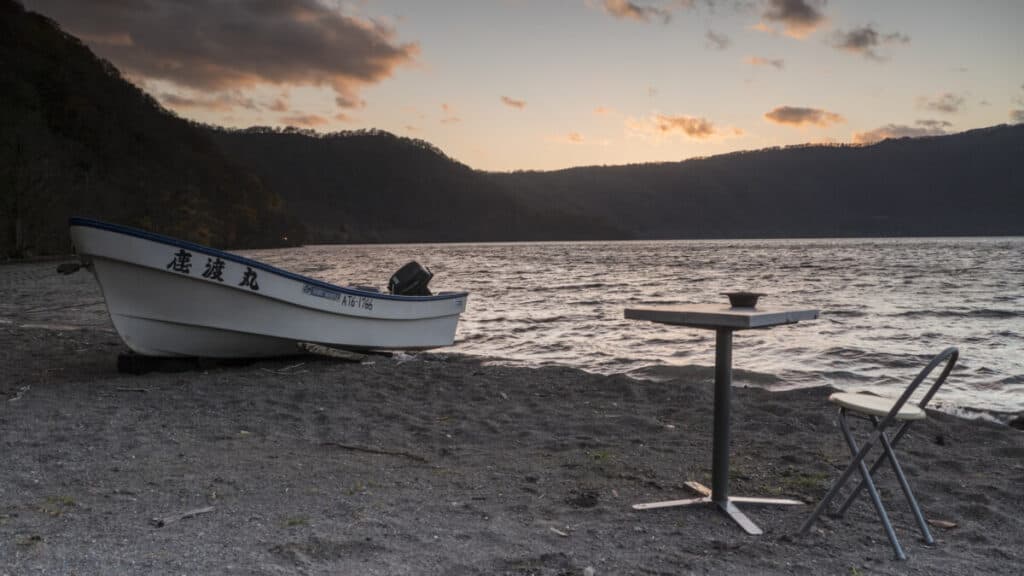
This lovely park is home to several lakes and moors, as well as a complex ecology that has evolved as a result of a mix of volcanic activity and winter snowfall. The various hot springs in this park are also a draw.
Unzen National Park is one of Japan’s original national parks. The park’s terraqueous vista, which includes a volcanic landscape as well as an archipelagic seascape is its centerpiece.
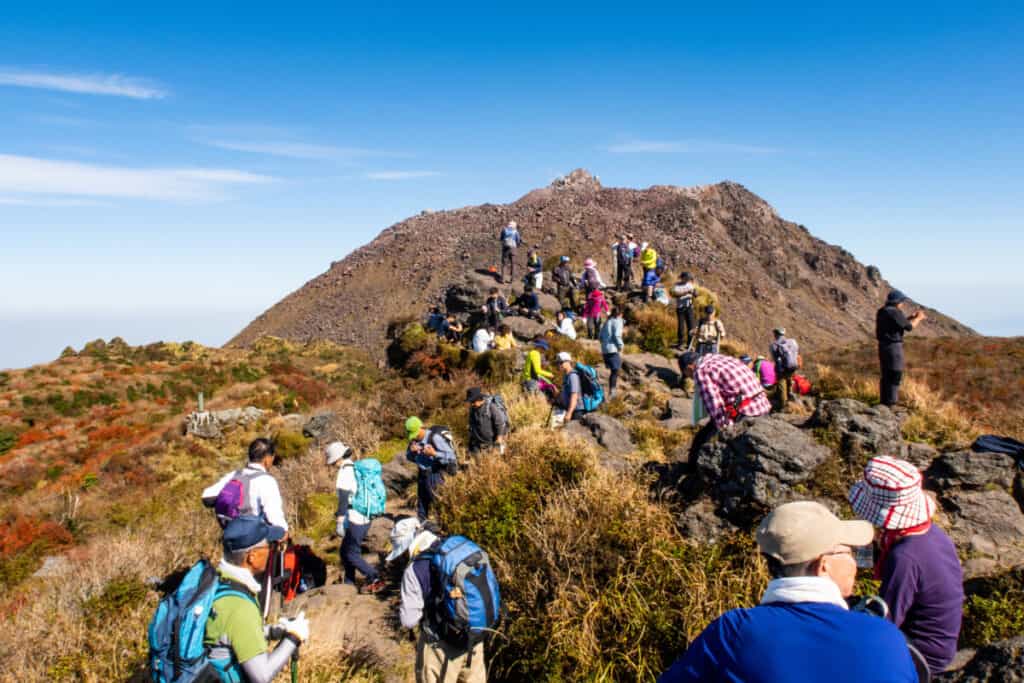
Visitors may see volcanic activity throughout the area. Both the Unzen and Amakusa areas are rich in historical landmarks. This results from the early entrance of foreign cultures in Japan. Tourists may visit this park to learn about the geological origins and blessings of the locations.
Yakushima Island and Kuchinoerabu-Jima Island enclose this national park. The Yakushima Island features a mountainous topography with some of Kyushu’s tallest peaks, as well as spectacular natural sceneries of the forest.
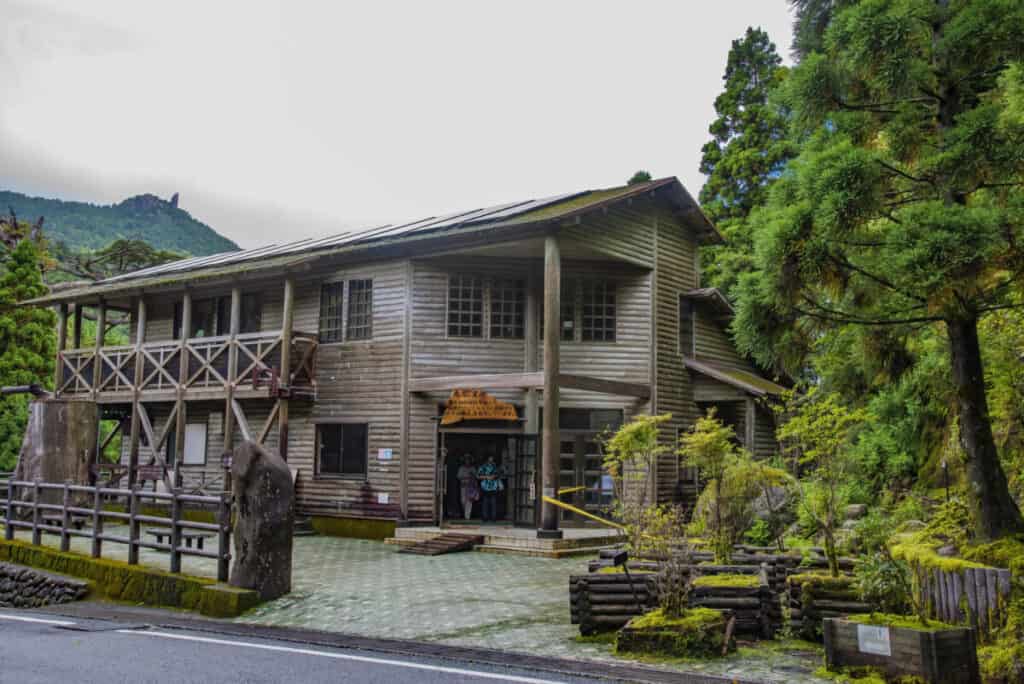
The eastern side of the Kuchinoerabu-Jima Island has volcanic vistas, while the coastline section has distinctive natural landscapes like sea caves and coastal cliffs worn by intense wave activity. In addition, despite being a volcanic island, lush vegetation covers the land. This park is home to unique animals that you can only find on Yakushima Island.
Yambaru National Park features a wide and different natural environment. The park’s diverse ecosystem includes a broad range of distinctive flora and animals set against the scenery of geological history. This produced the islands, uncommon animals, and plants residing in the park.
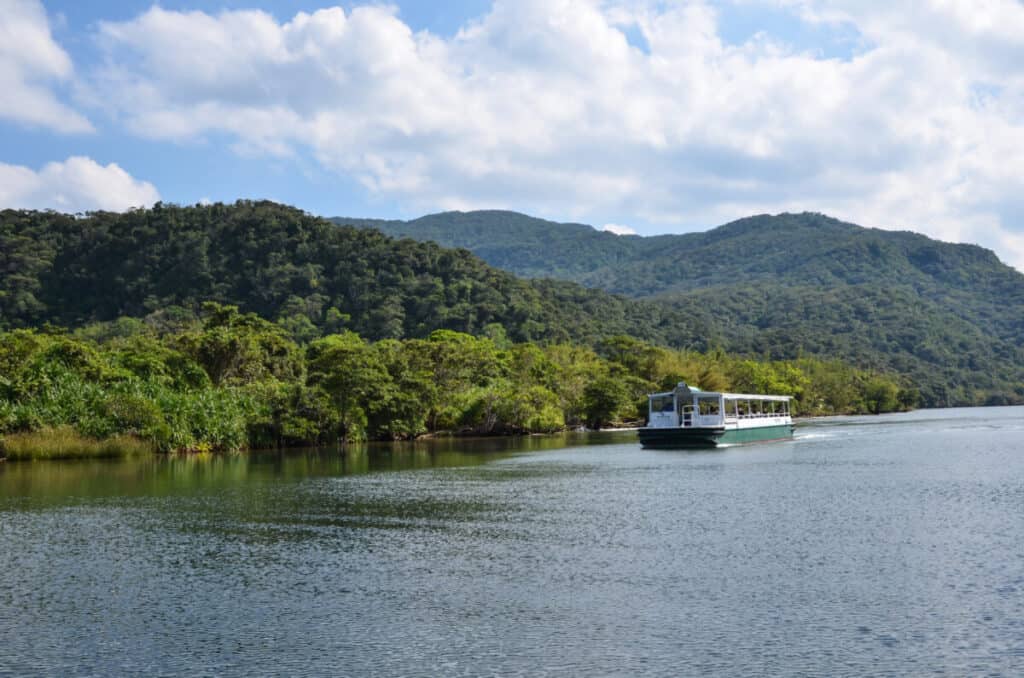
Another element of the cultural landscape that is alive and well is the day-to-day living, traditions that are unique to Yambaru in this natural setting. This park provides tourists the chance to connect with the enormous natural beauty the region has to offer.
Yoshino-Kumano National Park features a diverse scenery of mountains and beaches. A portion of the northern area is designated as a UNESCO Eco Park directed at harmonizing the preservation of ecosystems.
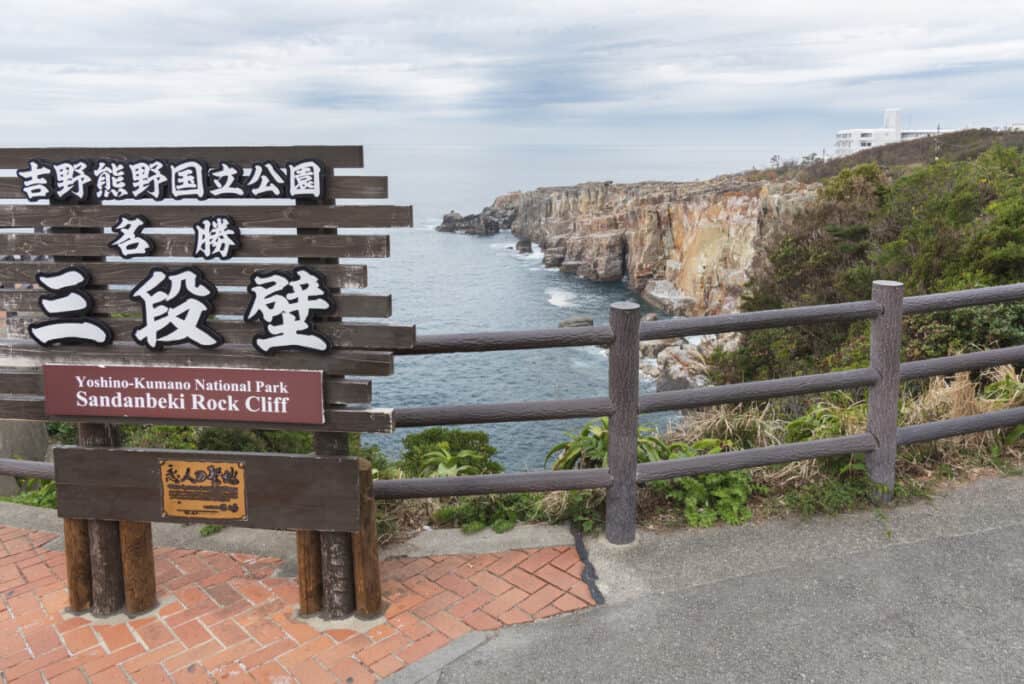
It also ensures sustainable usage. Moreover, the Nanki Kumano area that is based in Wakayama Prefecture is certified as a Japanese Geopark.
Now that you know about the rich biodiversity and stunning beauty of the 34 national parks in Japan, you can see that these are the must-visit parks if you want to have an extremely beautiful nature experience. Hope your visit to Japan is as extraordinary as its national parks.
National Parks of Japan Official Site | Ministry of the Environment

